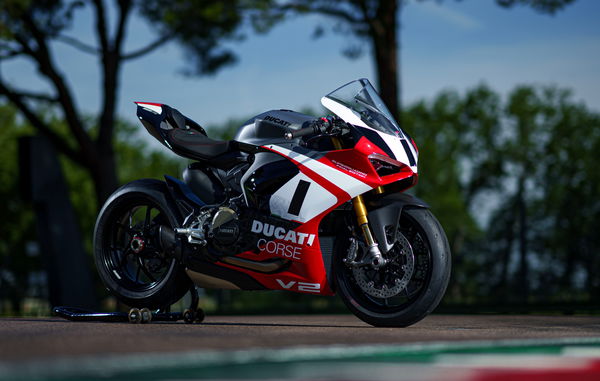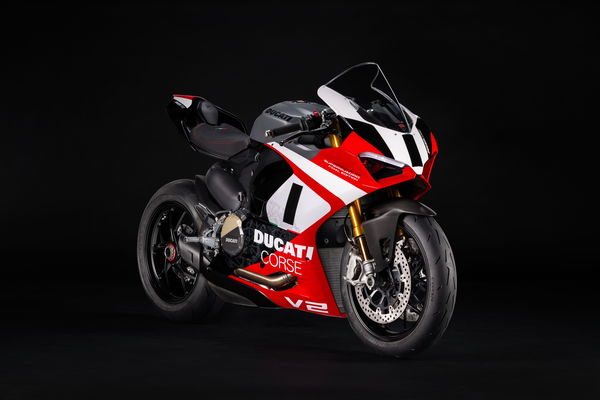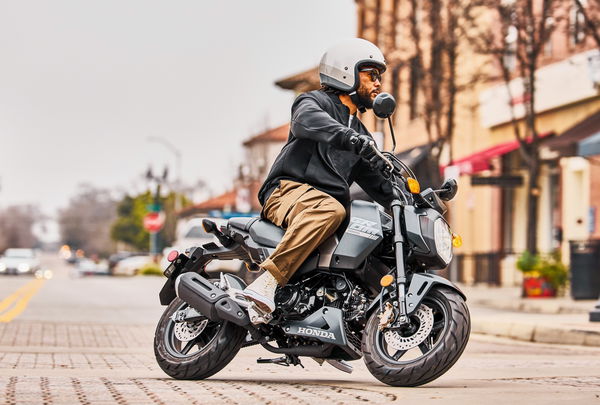The Ducati Panigale V2 Superquadro Final Edition is the End of A V-Twin Era
The ‘last of line’ Ducati V-twin Superquadro superbike goes out in style – and then some

The ‘King’ Ducati V-twin superbike is dead – long live the Ducati V-twin superbike!’
Or something like that…
In case you missed it, the end of the line is approaching for Ducati’s traditional V-twin Superquadro superbike. But the legendary Italian brand is making sure it’s going out with a triumphant bang with this, the Ducati Panigale V2 Superquadro ‘Final Edition’.
You can read our 2025 Ducati Panigale V2 review here.
Unveiled this week as a ‘last of line’ model, it’s the last Ducati to use the ultimate incarnation of the marque’s traditional V-twin engine, the oversquare ‘Superquadro’ (Italian for ‘Super Square’) as introduced on the 1199 Panigale in 2011.

That bike evolved into the 1299 Panigale before being replaced with the all-new V4 Panigale in 2019.
The Superquadro V-twin, however, lived on smaller form, first in the 2013 899, which was then superceded by the 2016 959, before being renamed as the Panigale V2 in 2020. It’s that bike, capable of 155bhp, that’s now finally reaching the end of the road, hence this Final Edition. And Ducati is certainly giving it a fitting send-off.
The Final Edition has been conceived as a tribute to the ultra-sophisticated Superquadro V-twin with the bike itself slathered in quality, high-value, bespoke parts. Just 555 will be built, each individually numbered and coming with a certificate of authenticity.

Although the heart of the bike is, perhaps appropriately, unchanged, displacing 955cc and producing a claimed 153bhp at 10,750rpm and torque of 77lb ft of torque at 9,000 rpm, much of the rest of the Panigale is up-specced or bespoke.
There’s a special paint scheme designed by Drudi Performance (he of Valentino Rossi fame) in collaboration with the Centro Stile Ducati. The suspension front and rear is by Ohlins and comprises fully adjustable 48mm upside-down forks with TiN treatment and a fully adjustable monoshock. Brakes are the latest Brembo M4.32 monobloc calipers. There’s the latest generation electronics with a six-axis IMU controlling riding and power modes, Bosch cornering ABS, Ducati Traction Control (DTC), Ducati Wheelie Control (DWC) and more. It also has an Öhlins steering damper.
Cosmetically, the single-seat machine also has a bespoke saddle, key, numbered plaque on the top yoke and even a bespoke screen animation on start-up. There’s also a carbon fibre silencer end cap, front and rear mudguards, swingarm protector, chain guard, clutch cover and shock protector.

Finally, there are special sports handlebar grips, milled aluminium adjustable footpegs, billet tank cap and even a custom bike cover thrown in.
Prices are yet to be announced but it’s expected to go on sale in October.
Effectively, the V2 Final Edition marks the end of a long line of Ducati superbikes dating all the way back to Paul Smart’s historic Imola 200-winning Desmo 750 SuperSport of 1972. More specifically, however, it marks the end of its superbikes using the four-valve, liquid-cooled, Desmo engine format which began with the original 851 of 1987. That bike led on to the WSB-winning 888, 916, 999, 1098 and more and also spawned the smaller 748, 749, 848, 899 and 959, right up to the current Panigale V2.
But although the end of the Ducati V-twin superbike, it’s not the end of the Ducati V-twin. The marque’s 939cc, 110bhp V-twin lives on in the SuperSport 950, DesertX, Monster and Multistrada V2 while an air-cooled 803cc V-twin continues to be used in its three-strong Scrambler family.












